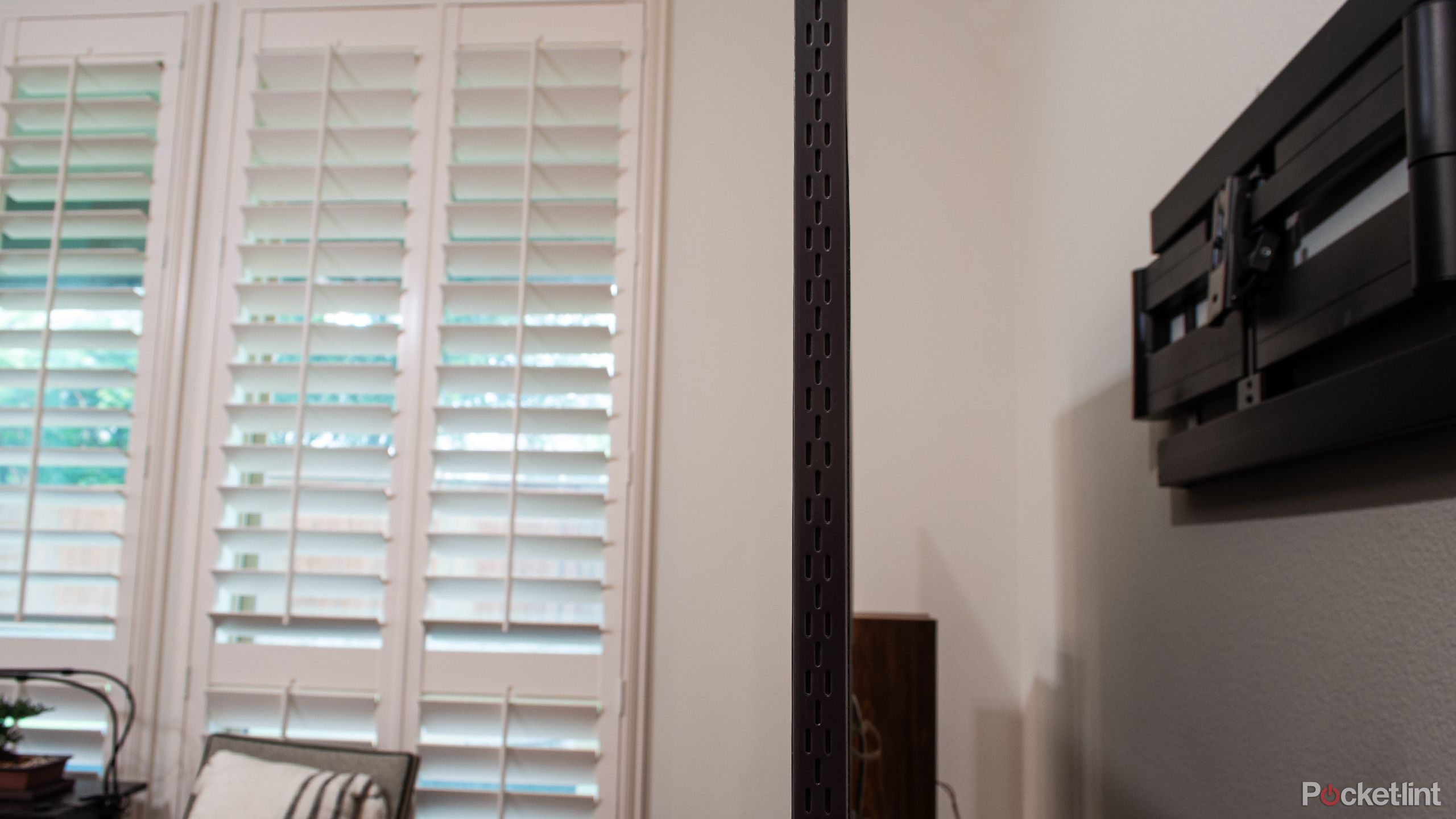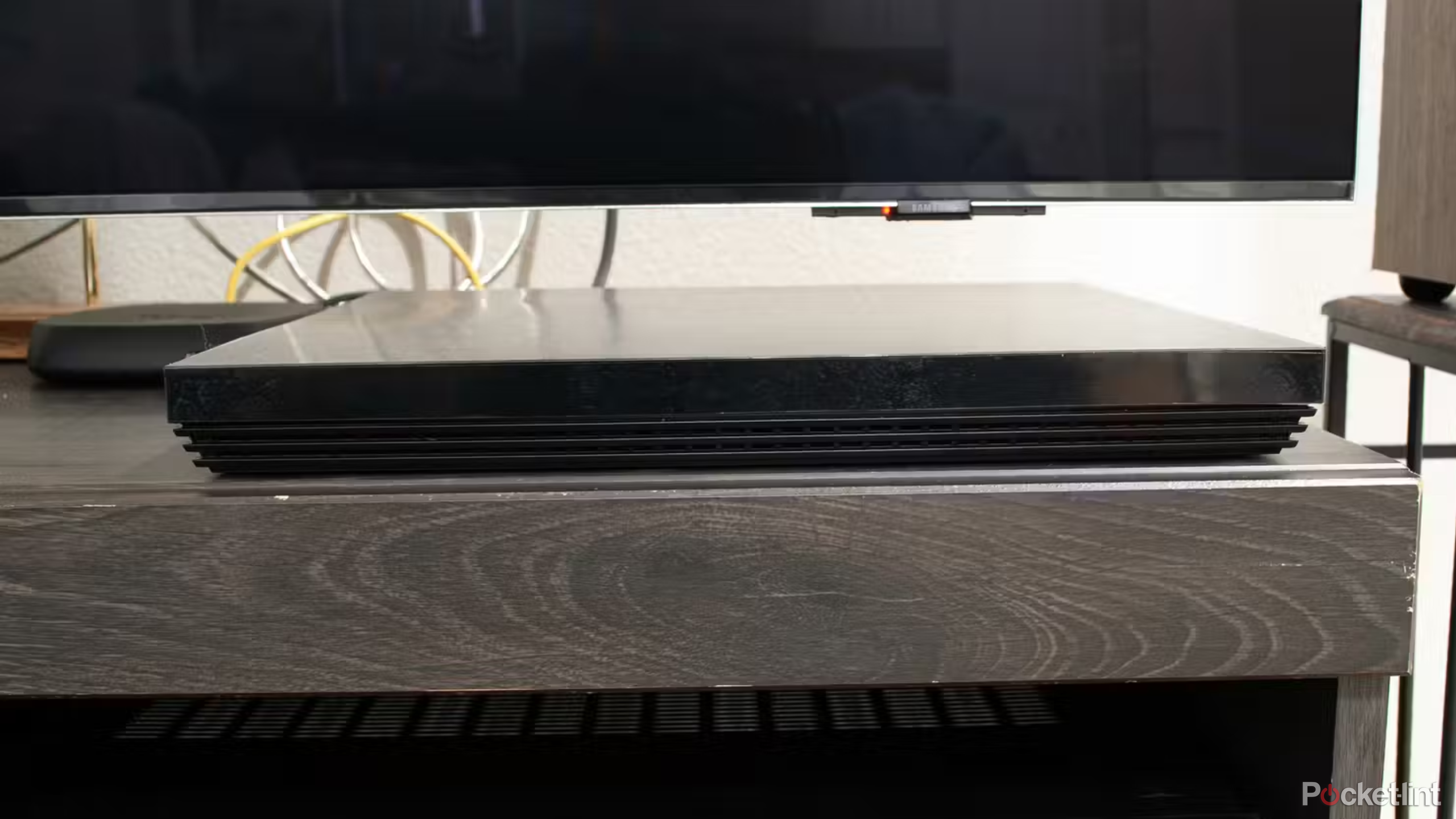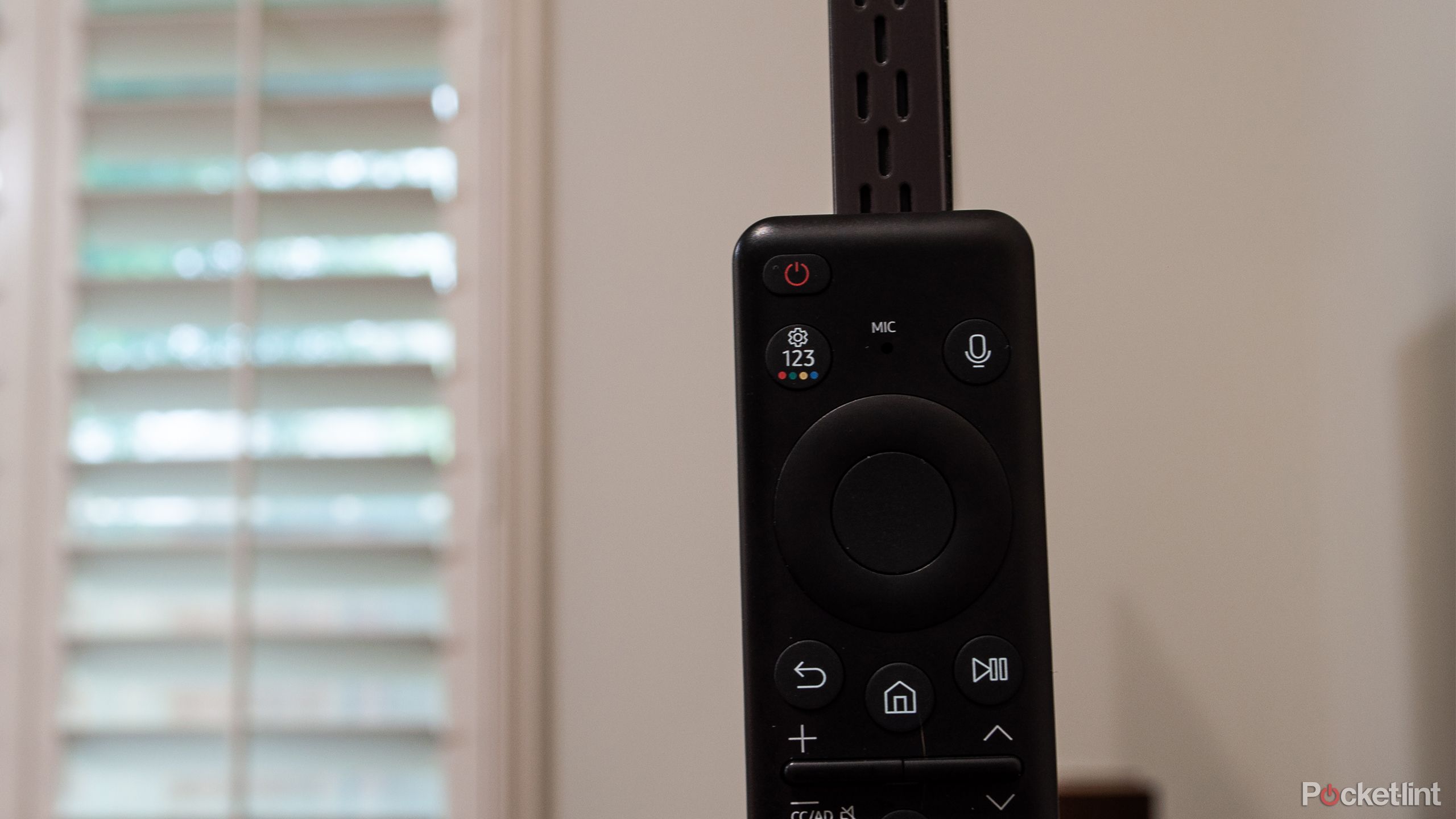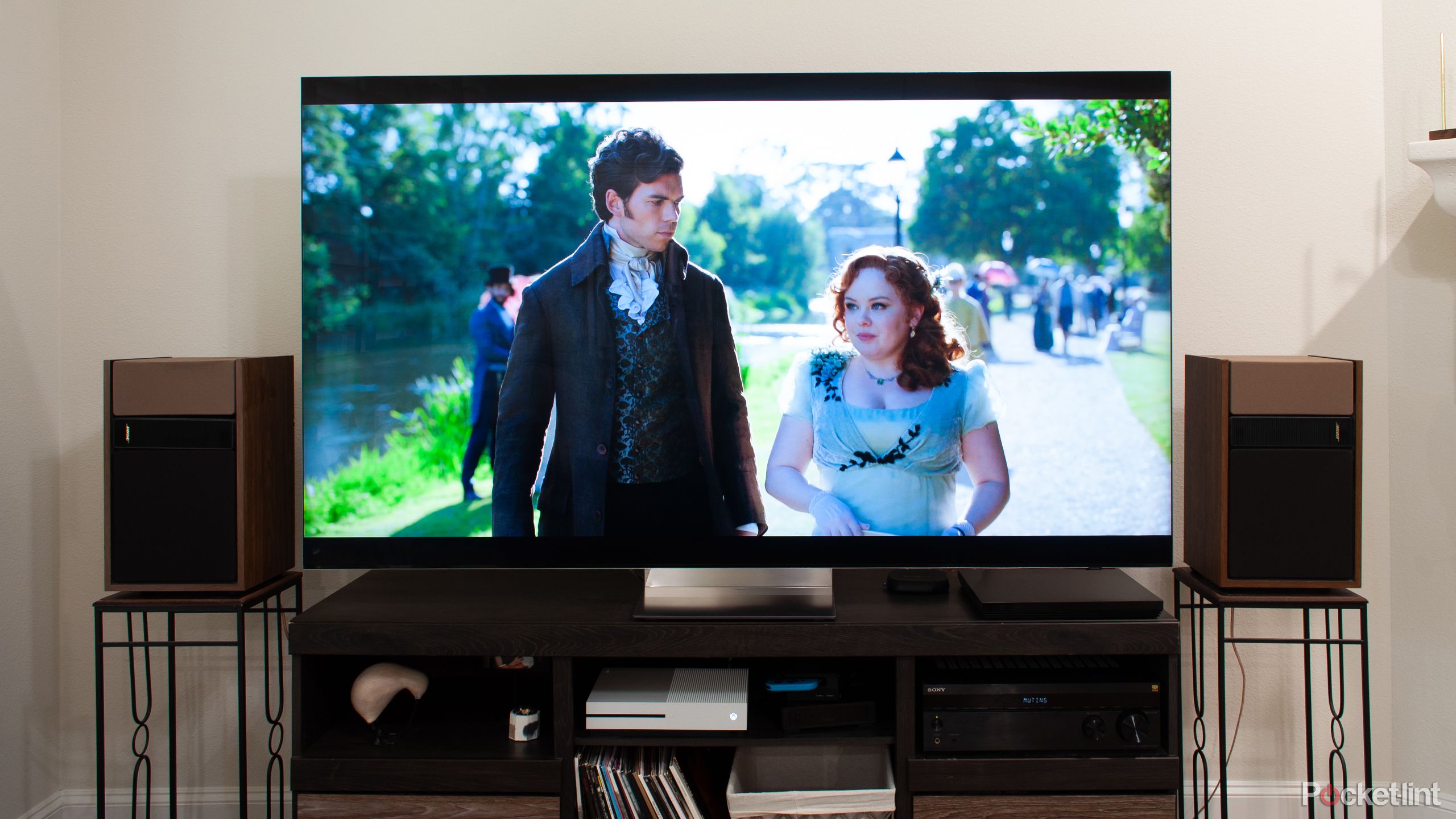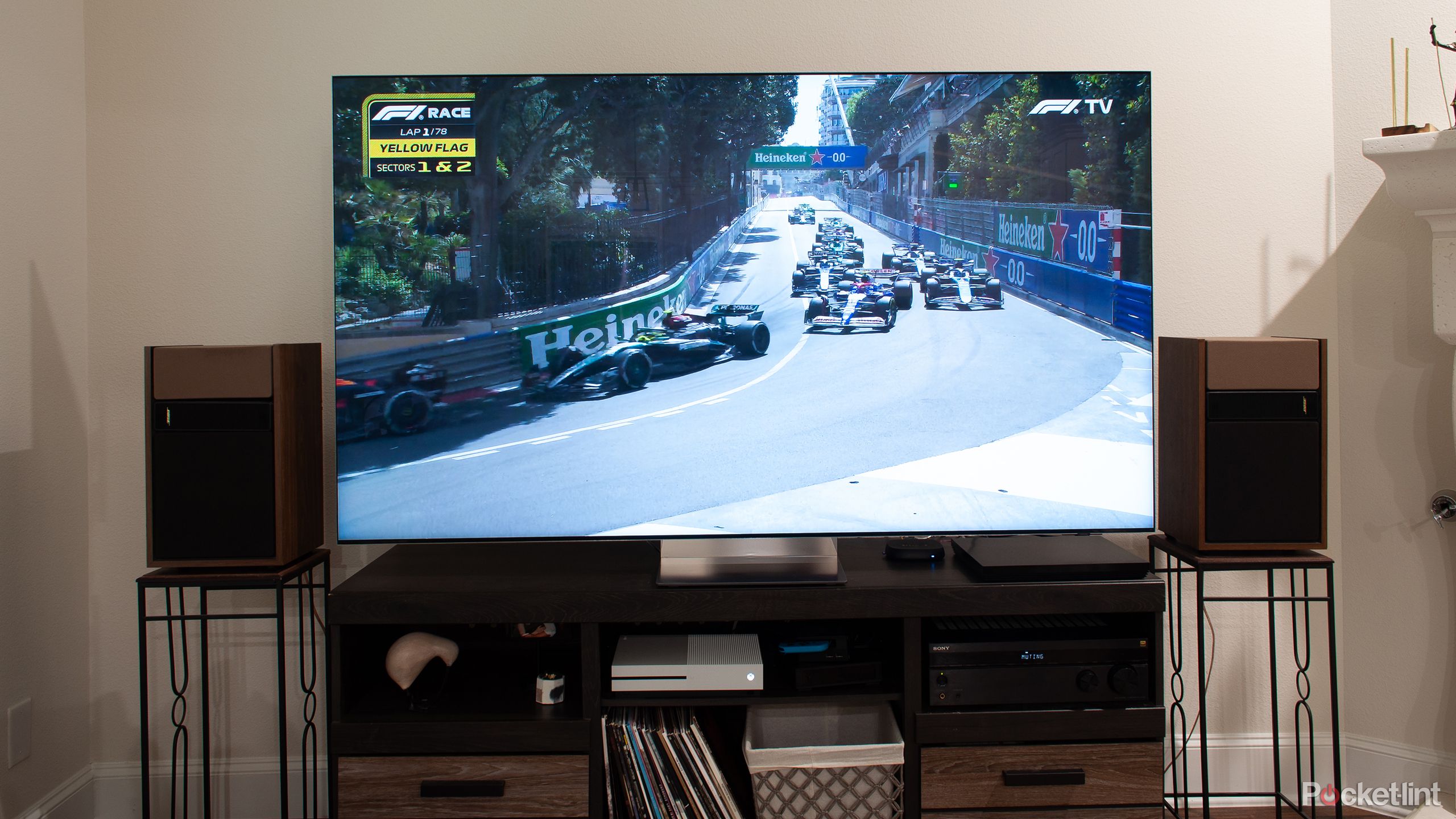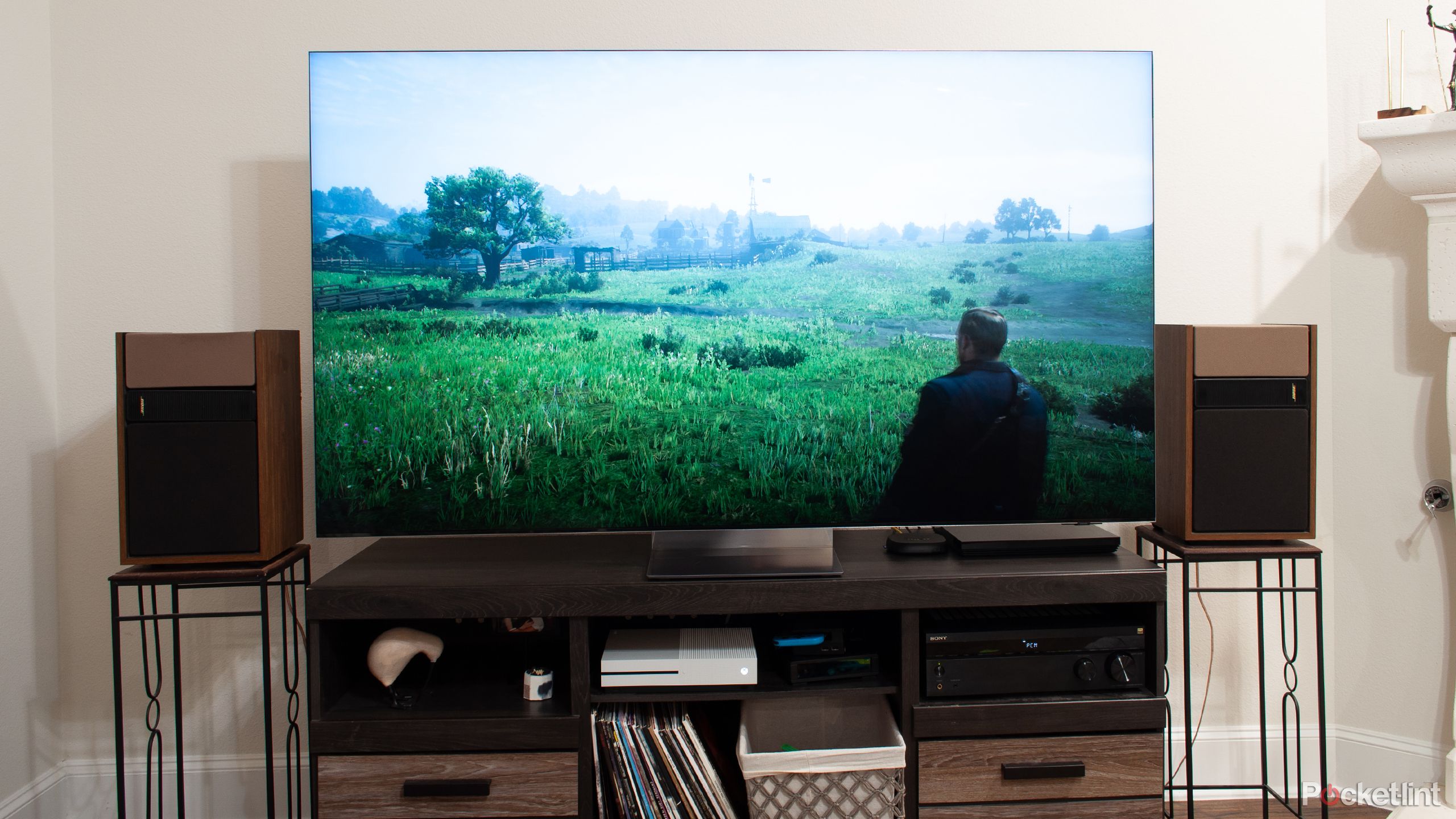I first laid eyes on an 8K TV at CES in 2012. At 19-years old, I was used to watching movies in 1080p — maybe 4K if a TV was really cutting edge for the time– so I was completely captivated that day on the Las Vegas showroom floor. From that moment on, I knew it was resolution, not 3D, that was the future of immersion in television.
6 things to know about Samsung’s new 98-inch Crystal UHD TV
Samsung’s latest big screen costs $4,000 and comes with tons of goodies. Here’s what to know before dropping any of your hard-earned cash.
Twelve years later, in 2024, it finally feels like TV tech has reached an era where 8K television, despite the stark lack of content, is starting to make for a compelling viewing experience. And the QN900D 8K QLED from Samsung is the strongest evidence for that argument I’ve seen so far. The newest model builds on advancements like local dimming zones, and brighter LED technologies that could be found on its previous flagship 4K models like the QN90B. Ultimately, I think this TV represents among the first entries in a generation of accessible 8K panels, and the opportunity to upgrade your viewing space.
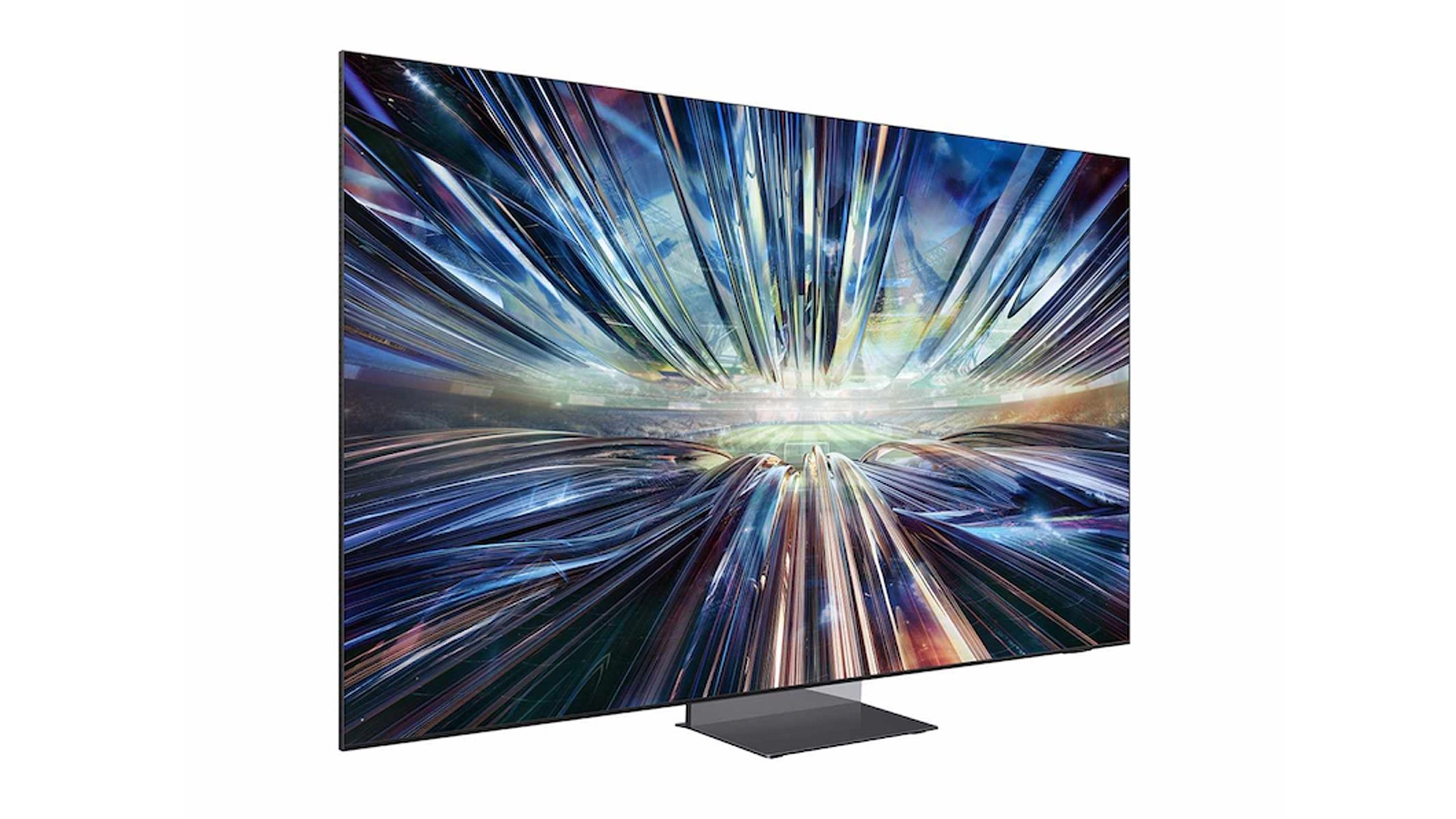

Samsung Neo QLED 8K QN900D
- Display Technology
- Neo QLED
- Connectivity Technology
- HDMI
- Brand
- Samsung
- Refresh Rate
- 120Hz
- Resolution
- 8K
- HDR?
- HDR 10+
- Ports
- Ethernet, USB, HDMI, HDMI-ARC
- Screen sizes (inches)
- 65″, 75″, 85″
- Outstanding brightness and contrast
- 8K resolution serves as future proofing for years to come
- Not a lot of 8K content at the moment
- ‘One Connect’ box is mildly inconvenient
Price, specs, and availability
I tested the Samsung QN900D in its 75-inch version, which retails for $6,300 but can already be found for modest discounts as Samsung pushes the adoption of their flagship unit. As of the writing of this article, the 65-inch, 75-inch, and 85-inch units are $200, $300, and $500 off, respectively. 8K TVs are by no means cheap, and for some context in pricing, I’d point out that the equivalent top-of-the-line 4K QLED from Samsung of the same size is half the price. But even a premium of 100% is a far cry from the prices of years past, when 8K displays felt completely out of reach, and their prices out of touch.
Samsung Neo QLED 8K QN900D
- Display Technology
- Neo QLED
- Connectivity Technology
- HDMI
- Brand
- Samsung
- Refresh Rate
- 120Hz
- Resolution
- 8K
- HDR?
- HDR 10+
- Ports
- Ethernet, USB, HDMI, HDMI-ARC
- Screen sizes (inches)
- 65″, 75″, 85″
The Samsung QLED 8K QN900D has perhaps its most important spec right in the name, but the rest of the rundown is as impressive as its resolution. With a native refresh rate of 120Hz, the impressive display comes prepared for the most recent generation of gaming consoles. Both the PS5 and Xbox Series X promise to support 8K content in the future, and slowly but surely, more gaming titles are being released with eventual support for 8K resolution in mind. Resolution aside, the 120Hz refresh rate is also great for any PC gamers.
The Samsung QLED 8K QN900D is available now on Amazon, Best Buy, and directly from Samsung.
Design and interface
A sleek and thin profile make mounting a no-brainer
The thin and almost bezel-less panel cuts a striking figure in my living room, as Samsung has nearly perfected the thin profile design that it’s been working toward throughout previous models. The mirror-finished stand it sits on when not wall mounted feels luxurious, though it can be mildly distracting in your peripheral vision.
What this television really deserves is to be mounted on your wall, though some consideration will have to be paid for the external “One Connect” box which serves to house a lot of the major components of the QN900D. This television is impossibly thin, and the “One Connect” box serves as a sacrifice in exchange for the TV’s ultra-thin design. The box can be sort of propped up on the back of the TV stand so that it doesn’t take up surface space on your TV console.
The speakers on the back of the QN900D can get plenty loud, but the sound quality itself leaves much to be desired. This can be said though for just about any embedded TV speakers. After all, speakers on the back of a TV facing backwards towards a wall is not how audio is intended to be played.
Tizen Smart TV OS
The QN900D comes out of the box with Samsung’s Tizen Smart TV operating system installed. Samsung has been using the Tizen system on its smart TVs since 2015, and in the years since the OS has continued to improve.
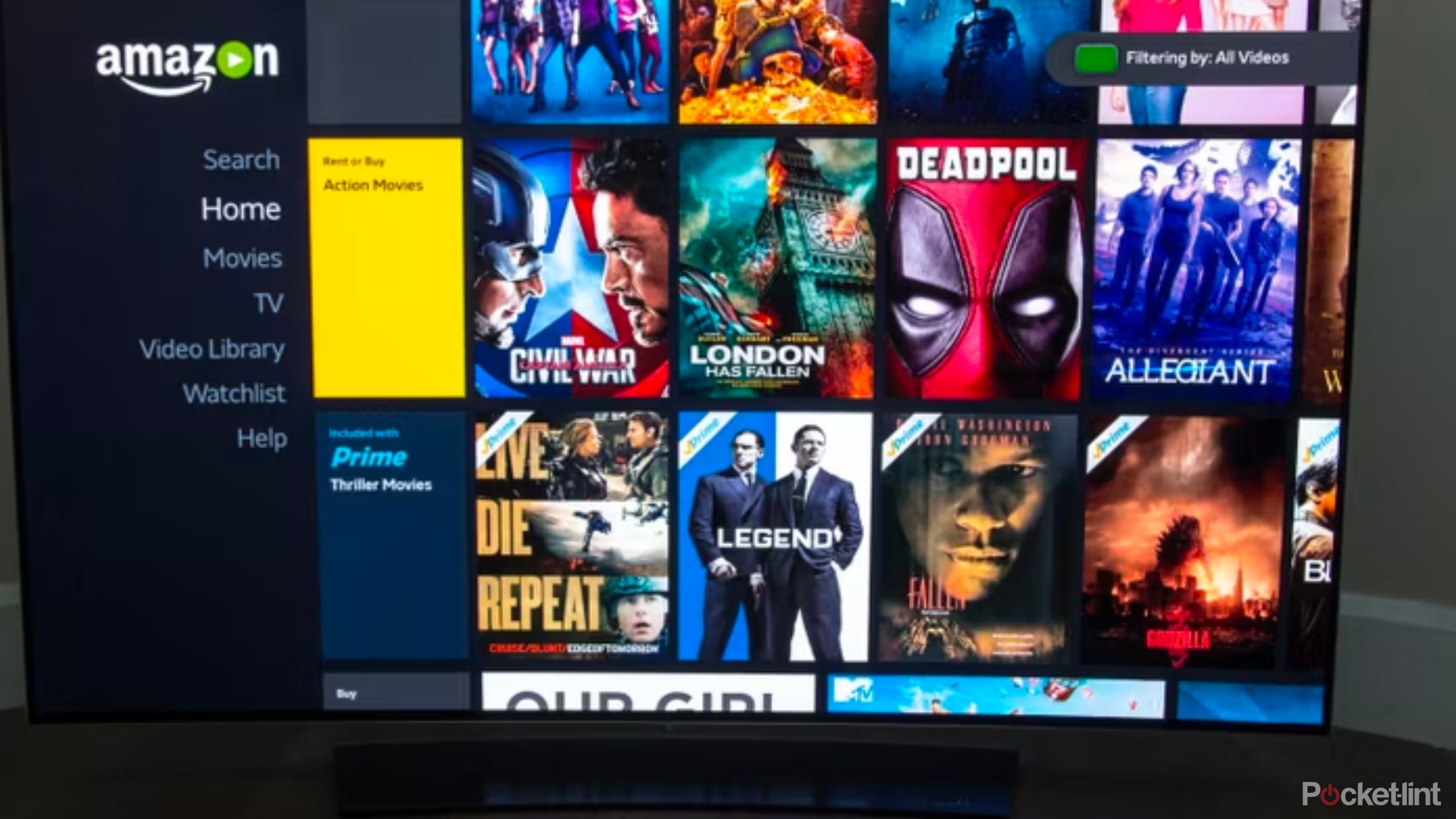
4 upgrades that would make Tizen my ideal TV OS
Samsung’s TV OS has improved, but still could use a few more tweaks.
It provides a clean interface that was easy to click as I used the QN900D’s minimalist remote. The OS allowed for easy navigation between natively installed apps on the TV, like all the major streaming platforms, as well as connecting with external devices, watching some live TV, and even browsing the web.
Brightness, resolution, and display
Top of the line AI upscaling and brightness make for a stellar image
Credit: Netflix
While there isn’t a robust selection of native 8K content just yet, built-in AI upscaling technology does its best to enhance the image from native 4K or 1080p content. The result is crisp and impressive, though limited by the format of the content, with upscaling during streaming services being the least impressive, while gaming and 4K Blu-rays provide the best picture.

5 essential things to know about your TV’s motion smoothing feature
Adding in artificial frames to fill content gaps, directors and Tom Cruise want you to turn it off, but it has its place.
When I watched John Wick: Chapter 3 on UHD Blu-Ray, the QN900D did an admirable job of blowing up the image to fit the screen while maintaining action shots with as much clarity as possible. The 4K Blu-Ray provided for a significantly higher bitrate than 4K streaming currently provides, giving the AI upscaling tech a lot more to work with, resulting in a beautiful image.
The QN900D features stellar peak brightness, making it an easy daytime television.
Additionally, the QN900D features stellar peak brightness, making it an easy daytime television. The bright display handles the various lights and windows in my living room with ease, while throwing off limited reflections that could otherwise prove distracting on less bright displays.
A gamer-friendly display
Credit: F1/Liberty Media
As well as delivering superb brightness, the QN900D boasts a native refresh rate of 120Hz, making compelling for console gamers like myself who want in on seamless action. For the PC gaming inclined, the QN900D offers its “Motion Xcelerator 240Hz” technology, which uses frame interpolation to mimic a 240Hz refresh rate. This feature is limited to 4K resolution, however, and works only with compatible PCs. The new model is well-prepared for gaming technologies to come, as well as offering high performance for the gaming consoles of today.
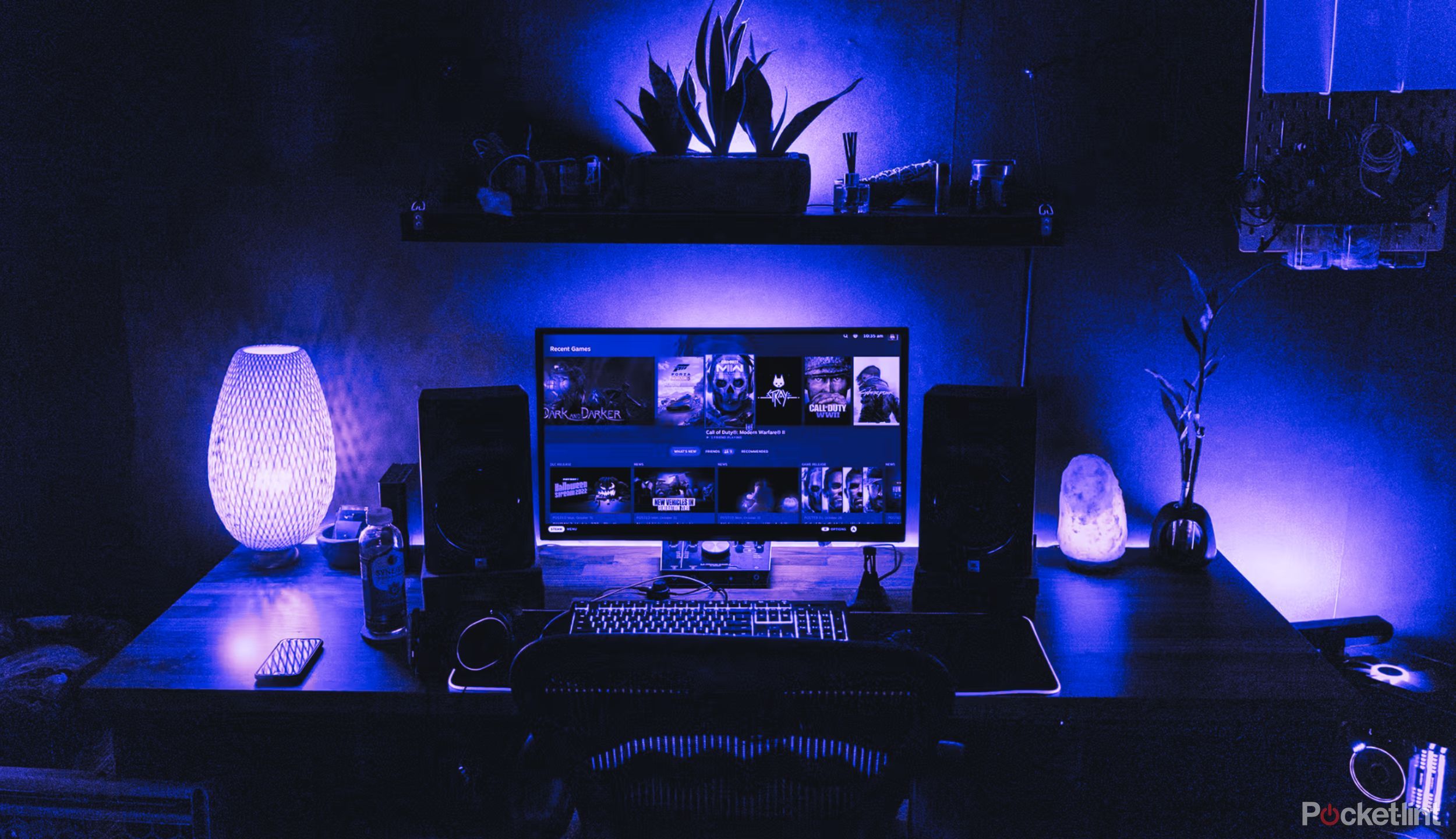
9 Steam games to install first on your gaming PC
If you’ve taken the dive into PC gaming, Steam will no doubt be your first stop. These are the games you should boot up first.
When playing Red Dead Redemption on my Xbox One S, which renders at 4K, the QN900D did a commendable job of upscaling the game to fit the screen. The 120Hz refresh rate helped the game feel smooth and the image was decent considering my Xbox One S is really just upscaling 1080p to 4K, then the TV is upscaling that 4K to fit the screen. The QN900D also achieves a 2ms input lag when in “game mode,” which is impressive for a non-gaming-dedicated panel.
Sparse 8K content and a high price tag make for a fun toy, but a poor value
I just didn’t feel like my day-to-day lived experience with the QN900D was very “8K-like,” instead it felt more like 4K…plus?
As impressed as I’ve been with Samsung’s QN900D, and as much as 8K TV prices have started to come down, this still feels a couple of years too early for me to invest in an 8K television. Showing off the TV with 8K YouTube videos was fun, but even those are few and far between, and the AI upscaling technology seems mostly wasted on television and film viewed on streaming services, whose compression algorithms leave little to work with when upscaling. As the technology currently stands, no amount of processing power can solve the crushed blacks, banding, and intermittent clarity that is par for the course when streaming from any of the major content platforms. I just didn’t feel like my day-to-day lived experience with the QN900D was very “8K-like,” instead it felt more like 4K…plus?
Everytime I turned on HDR, I turned it right back off minutes later
Credit: Rockstar Games
At the time of writing, there aren’t any Samsung TVs that support Dolby Vision HDR, so naturally, this model is no exception. Instead, the QN900D supports HDR10+, which, despite its best efforts, does not, in my opinion, hold a candle to Dolby Vision HDR. HDR10+, while an improvement on its predecessor (HDR10), performs horribly in daylight, rendering an image hardly bright enough to see details. Once you begin to adjust settings in an attempt to brighten the picture, you end up defeating the very purpose of HDR by blowing out the image with low contrast, whitewashed quality. Only at night or in a dark, pitch-black room with all the lights off, does HDR10+ show off its truest potential.
I had to turn off every single light in and near my living room in order to achieve a picture with rich contrast and proper white balance.
In testing for this review, and totally only because I was testing the QN900D, I watched the latest season of Bridgerton on Netflix in HDR. It was a frustrating experience to say the least. I had to turn off every single light in and near my living room in order to achieve a picture with rich contrast and proper white balance. It looked absolutely stunning, of course, but impractical until HDR can be brighter, which Dolby Vision achieves, while HDR 10+ does not.
At the end of the day, some of this is simply the difference in performance between a Neo QLED panel and the OLED panels found on other models.
Verdict: Should you buy the new Samsung Neo QLED 8K QN900D?
This is hands down one of the most advanced none-OLED displays on the market today, and an excellent example of how LED technologies like Neo QLED can still make for a compelling end product. While the price point leaves no question as to whether this is a premium model, there are still some considerations before purchasing, even for those with higher budgets.
If you can spend $5,000-$8,000 on a TV, and plan to keep it for at least five years if not 10, then this could make a great addition to your home, and serve as the centerpiece of your home entertainment for years to come. This is particularly true if you are a console gamer, as we continue to move closer to 8K gaming as a reality. All in all, the 8K QN900D is best thought of as a long-term investment. One that will stick around your home long enough to see 8K content become more common.
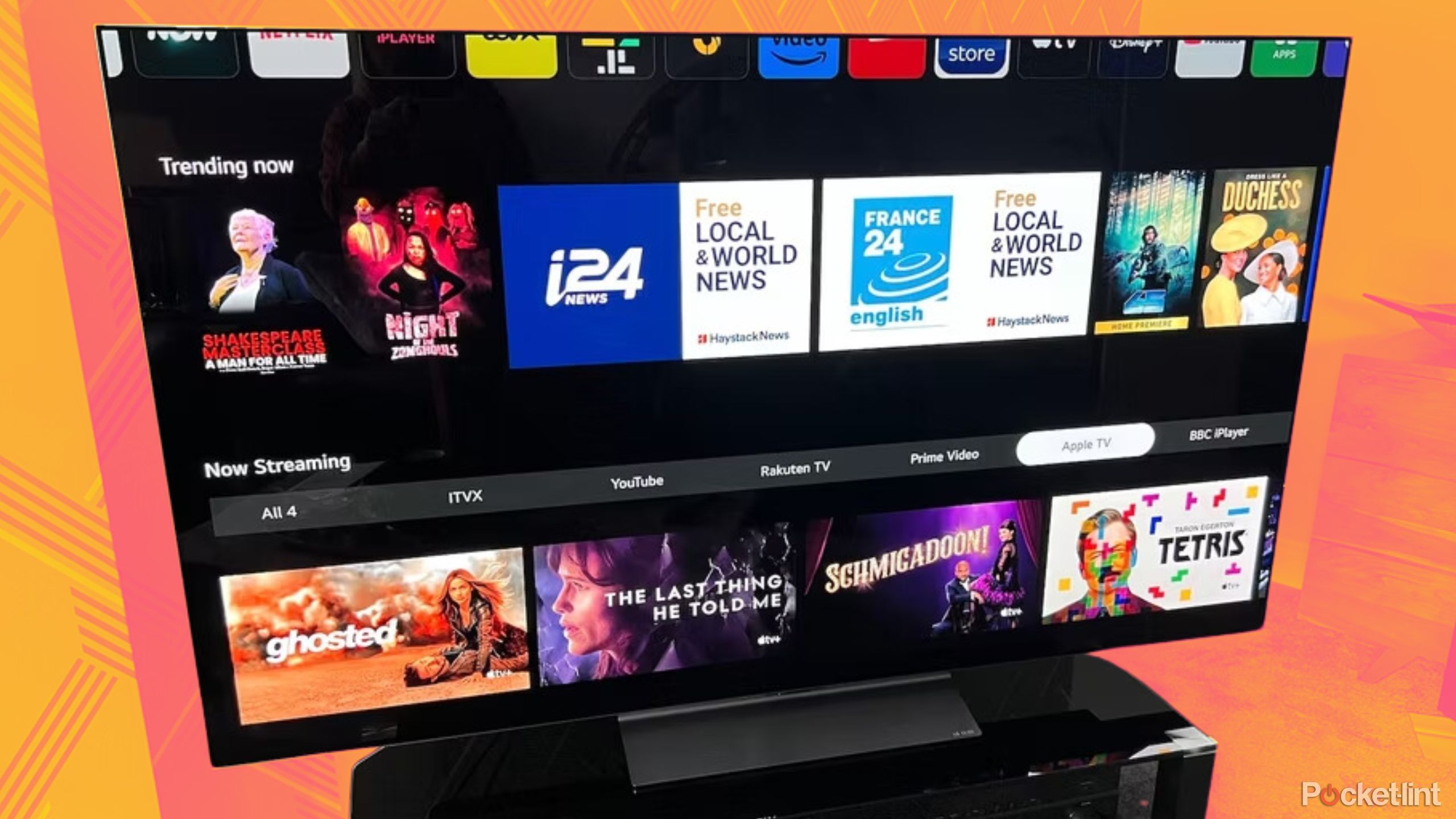
4 reasons I’d buy an OLED TV over a QLED TV
In the battle of screen technologies, OLED better supports my viewing experience.
The Samsung QN900D represents an impressive step forward in high resolution displays and brings us that much closer to 8K proliferation as these models become more affordable and accessible with every passing year. The QN900D is an impressive piece of technology and a feat of display engineering, offered rightfully so at a premium price. If this step into the future is comfortably within your price range, then the QN900D might just be worth it.


Samsung Neo QLED 8K QN900D
- Display Technology
- Neo QLED
- Connectivity Technology
- HDMI
- Brand
- Samsung
- Refresh Rate
- 120Hz
- Resolution
- 8K
- HDR?
- HDR 10+
- Ports
- Ethernet, USB, HDMI, HDMI-ARC
- Screen sizes (inches)
- 65″, 75″, 85″
Trending Products

Cooler Master MasterBox Q300L Micro-ATX Tower with Magnetic Design Dust Filter, Transparent Acrylic Side Panel, Adjustable I/O & Fully Ventilated Airflow, Black (MCB-Q300L-KANN-S00)

ASUS TUF Gaming GT301 ZAKU II Edition ATX mid-Tower Compact case with Tempered Glass Side Panel, Honeycomb Front Panel, 120mm Aura Addressable RGB Fan, Headphone Hanger,360mm Radiator, Gundam Edition

ASUS TUF Gaming GT501 Mid-Tower Computer Case for up to EATX Motherboards with USB 3.0 Front Panel Cases GT501/GRY/WITH Handle

be quiet! Pure Base 500DX ATX Mid Tower PC case | ARGB | 3 Pre-Installed Pure Wings 2 Fans | Tempered Glass Window | Black | BGW37

ASUS ROG Strix Helios GX601 White Edition RGB Mid-Tower Computer Case for ATX/EATX Motherboards with tempered glass, aluminum frame, GPU braces, 420mm radiator support and Aura Sync


